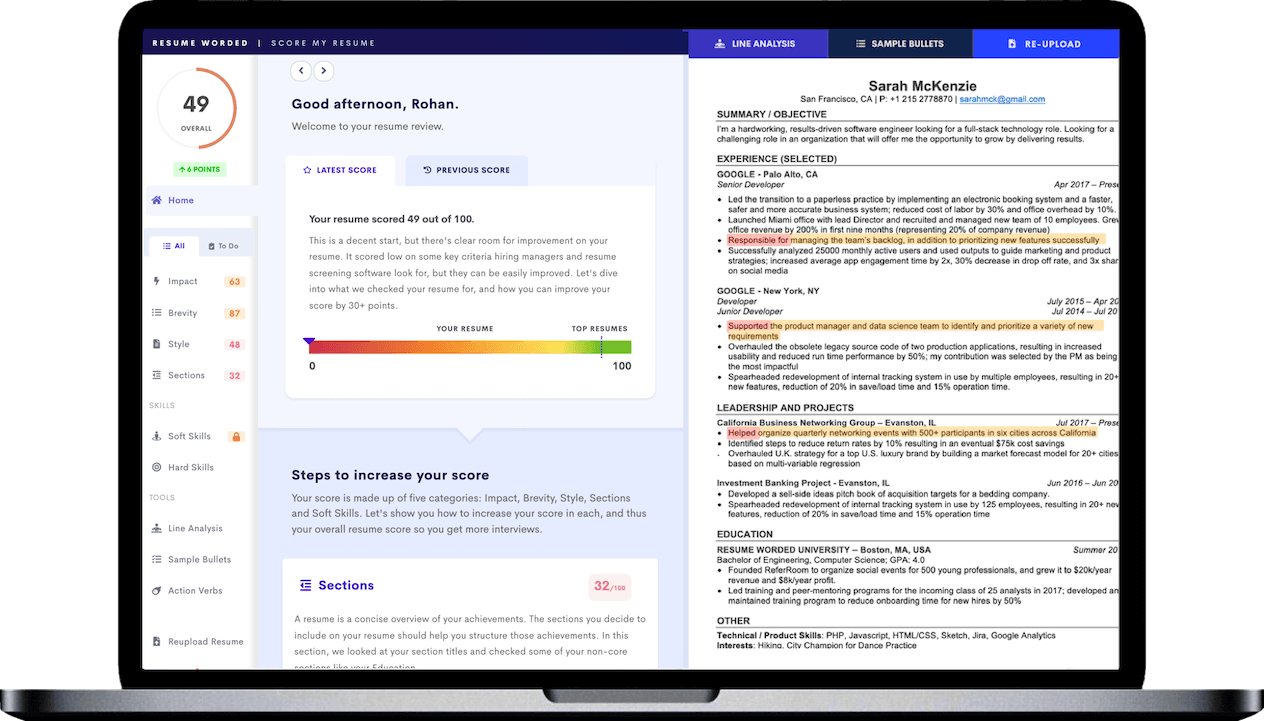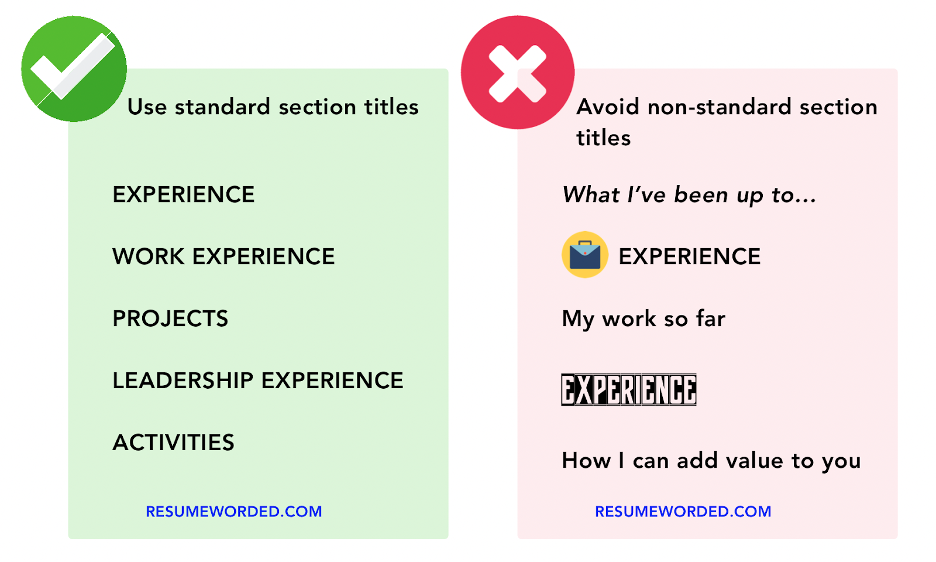Life is full of unexpected twists and turns. Whether you've chosen to take a breather from the work or faced unforeseen circumstances, gaps on your resume can happen to anyone.
If you've taken a few months — or even a few years — off between jobs, either voluntarily or due to external factors, it doesn't have to be a big deal or a looming shadow over your resume. In this guide, you'll learn how to explain these gaps confidently in a professional and convincing manner.
The truth about employment gaps
In the current job market, the rise of remote work and the gig economy are reshaping traditional views on resume gaps. Many workers now juggle flexible roles, short-term contracts, and prioritize work-life balance, leading to irregular career paths. As a result, employers are learning to reevaluate resume gaps as indicators of adaptability and diverse experience rather than shortcomings.
Why some employers are still wary of gaps on your resume
In and of itself, a resume gap isn't an issue. The reason modern employers notice resume gaps is because they raise questions, such as:
- Were you fired?
- Did you quit on a whim or with no warning?
- Did you leave without another job lined up?
- Have you left one or more jobs off your resume?
These all basically boil down to one thing: Is there a gap on your resume because you're trying to hide something?
When a resume gap is not a big deal
Most resume gaps are unlikely to be a problem. In particular:
If it's short
Employment gaps of less than six months aren't likely to stand out. Six months is a fairly standard timeframe for a job search, so you may not even need to explain a shorter gap.
If it's a one-time occurrence
If you only have a single gap on your resume, it's unlikely to raise red flags the same way a series of gaps might. Like anything else on your resume, context matters.
If there's a good reason
What is a good reason for an employment gap? Basically, anything non-work-related. If you've relocated, had a child, or taken time off for a family or health emergency, those are all good reasons that have nothing to do with your work performance. A career change is another good reason, especially if you've used that time to return to school or update your skill set.
If it’s a 2-year gap
While short gaps might go unnoticed, a 2-year gap requires an explanation. Mention any activities you participated in during this time that contributed to your personal or professional growth. Even if the activities aren't directly related to the job you're applying for, showcasing that you were proactive, learned new skills, or took on responsibilities can be beneficial.
When do resume gaps become a problem?
Employment gaps only become red flags if your resume shows a pattern of extended, work-related gaps that aren't explained. A brief explanation of the reason for a gap is far more beneficial than an unexplained hole.
Common reasons for resume gaps
Here are some common reasons to have a gap on your resume:
- Personal reasons: Life events like marriages, births, or health issues.
- Layoffs: Resulting from company downsizing or restructuring.
- Returning to school: Pursuing additional education or certifications.
- Travel: Taking time off to explore or for personal development.
- Caregiving: Looking after a family member, elderly parent, or child.
- Sabbatical: Personal or professional breaks to recharge or refocus.
- Extended job search: Extended periods spent seeking the right opportunity.
- Contract end: Completing a temporary or contract position.
- Starting a business: Trying to establish a start-up or personal venture.
- Economic downturns: Factors like recessions or global crises.
Remember, while these gaps may stand out on paper, what's most crucial is how you address them and showcase your growth or productivity during these periods.
How to explain a gap in employment on your resume
If you've taken a break from your career for any reason, you want to present your time off in a positive and professional way. Here are strategies to help you navigate this potentially tricky area.
Address a career break directly
If your employment gap is straightforward, such as taking time off for personal reasons, it's best to address it head-on by mentioning it briefly in your cover letter.
You can also list a career break under your work experience to provide more details about what you were involved in during this period. Appropriate accomplishments to highlight could include freelance projects, online courses, or entrepreneurial endeavors.
Include your gap as part of your work experience
List your employment gap as you would your regular work experience by using quantifiable, action-based bullet points. Make sure to include keywords, too — anything that's relevant to the job you're applying for can help you get through the initial screening step.
Reframe the gap
Every experience, including career breaks, offers learning and growth opportunities, adding to your unique strengths and experiences. Consider the skills you learned during your time off and transform your gap into an asset that will be of value in your next role.
For example, someone who took time off for caregiving might have developed organizational skills, or someone who traveled extensively may have gained insights beneficial for positions in global organizations.
Highlight freelance or contract work
If you've been involved in freelance or contract projects during your break, group these under one heading on your resume. This helps in maintaining clarity while showcasing your relevant achievements during the hiatus.
Here are more tips for how to list short-term or temporary work on your resume.
If you’re not sure if you’ve listed your freelance/contract projects or volunteer work the right way, upload your resume to the tool below. It’s a good way to check if you’ve used your temporary work to address any gaps in your resume.
Showcase volunteering efforts
Not all work experience has to be paid! Volunteering is a great way to fill any gaps in regular employment. Listing volunteer work on your resume can demonstrate your involvement in the community, show a passion for your chosen industry, and generate some genuinely resume-worthy accomplishments.
Emphasize further education
If you took time off for educational purposes, it's not a gap—it's growth! List it prominently in your education section. Even short courses or online classes can be included, especially if they've enhanced your skills in areas relevant to the jobs you're applying for.
If you’re not sure which skills you need to brush up on, use the tool below to get a list of skills relevant to the job you're applying for.
Mention personal reasons clearly
Whether you took time off to care for a family member, have a child, relocate, or recover from illness, it's okay to state these reasons. Ensure you communicate that these situations have been resolved or won't interfere with your work commitment.
If you were caring for a family member, it's best to keep the entry short. The exception is if you demonstrated transferrable skills relevant to your career, like going into a healthcare or administrative role. In that case, you can add more detail about the exact nature of those skills.
If the gap was due to personal injury or illness, the most important thing is to reassure employers that it won't happen again. You can address that with a short sentence stating that the issue is resolved.
Tackling tough reasons for employment gaps
Navigating employment gaps can be challenging, especially when the reasons are less than ideal; here's how to handle tricky employment gaps with tact and professionalism.
If you were laid off
Being laid off (as opposed to fired) isn't an immediate red flag for employers if discussed openly. State clearly why you were laid off, such as workplace restructuring or company downsizing, and use bullet points to highlight significant accomplishments prior to being laid off.
If you were fired
If you were fired, approach the topic with honesty and brevity. Rather than delving into details, state "Position ended" or "Contract concluded." Instead of focusing on the firing, highlight what you learned during the position and how you've grown professionally since then. And avoid speaking negatively about past employers.
Mental health breaks
For periods away from the workforce due to mental health, mentioning the need for a personal break on your resume is acceptable. Avoid excessive detail and emphasize your recovery and readiness to rejoin the workforce, highlighting any self-improvement or courses undertaken during this period.
Example of a resume that has a career break
If you're struggling to write your own resume from scratch, why not check out our ready-made resume templates? Here's a sample resume you can use as a starting point when addressing a career break:
Resume gaps do’s and don’ts
Do:
- Explain the gap. You can do this with a short sentence or two in your cover letter. Simply explain that you took some time off to raise a child/move overseas/care for a relative (or whatever your reason is) and that you’re eager to return to work full-time.
- Mention what you’ve been doing during your career break. If you’ve spent any time volunteering, pursuing further education, or running a side business, employers will want to hear about it. If you can, use this opportunity to include relevant keywords.
- Optimize your resume. Most of the time, employers fixate on so-called red flags when there are other issues with a resume. Running your resume though a free resume review can help identify any areas for improvement and give personalized suggestions.
- Network. If you can forge a personal connection with the hiring manager — whether through shared connections or reaching out directly — gaps on your resume will start to stand out less.
- Use a resume summary to provide a brief overview of your employment history and highlight your top skills and experience. This can help contextualize any job gaps (but steer clear of mentioning them directly in a resume objective or summary).
- Make sure your LinkedIn profile mirrors your resume and cover letter in addressing any gaps. Don’t leave potential employers or connections wondering what happened.
- Be prepared to answer questions. If you get to the interview stage, you may be asked about anything that stands out on your resume, including a gap. Clearly explain your reasons for taking the break and reassure the hiring manager that it’s unlikely to happen again. If you were dealing with a health issue or other potentially ongoing situation, state that it’s now been resolved.
Don’t:
- Don't try to hide the truth. Don’t stretch out the start and end dates of other jobs to try to cover a gap, or list a job you never held. Lying on your resume is never okay, and it will almost always be caught down the line.
- Don't make a big deal out of it. If you have only a single short or recent gap, you don’t need to call attention to it — most people probably won’t even notice. A study from the Society for Human Resource Management even found that employers increasingly support the need for career break.
- Don't pad out your resume with non-work activities. Things like running a household, planning a wedding, or being a stay-at-home parent might feel like a full-time job, but employers won’t see it the same way you do. Listing your job title as “Family CEO” or “Executive Director of the household” is gimmicky and more likely to harm your credibility than help.
- Don't use a functional resume format. These are often sold as being ideal for people with limited or sketchy work experience, but employers know this and will wonder what you’re trying to hide. Functional resumes don’t include dates of employment or a clear job history and make it impossible to evaluate candidates effectively. Most employers see anything other than a standard chronological resume as an instant red flag, so it'll more likely to get you rejected than owning and explaining any gaps.
FAQs
Should I proactively address employment gaps or just wait for the interview?
It's always better to briefly address significant employment gaps in your cover letter or resume, especially if you can frame them positively. By addressing it proactively, you demonstrate transparency and can control the narrative rather than waiting for an employer to enquire about a gap during an interview.
How do I explain an employment gap of over 2 years?
Be straightforward about the reason, whether it was for further studies, health issues, or caregiving. Emphasize any skills or personal growth during the gap, even if it's not directly related to the job you're applying for.
What if the reason for my employment gap is personal, and I don't want to share?
It's entirely valid to keep personal reasons private. In such cases, state "personal sabbatical" or "personal break" on your resume. During interviews, if questioned, you can emphasize that it was a personal matter that's now resolved and you're eager to rejoin the workforce.










